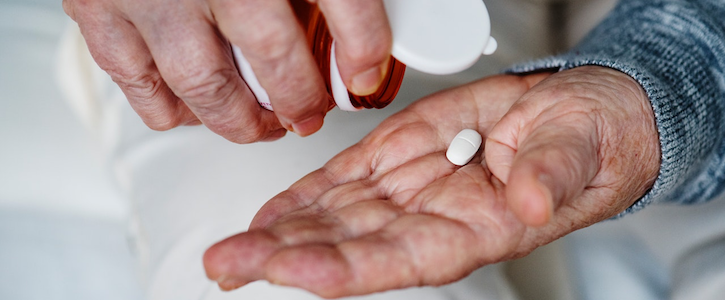Behavioral Health Integration as an Approach to Addressing the Opioid Epidemic
Clinical stakeholders don’t talk to each other enough. By opening the lines of communication, healthcare can fight substance abuse.

Physicians are aware of the nationwide opioid epidemic, but there has been little collaboration between physicians across specialties and care settings to address it. Instead, the emphasis on prescription control to stop the epidemic — including examining the flow of narcotics through state prescription drug monitoring programs, reevaluating opioid prescribing practices and stronger regulations against drug diversion — moves physician focus from collaboration to control. This healthcare fragmentation results in patients needlessly seeing multiple doctors for overlapping care needs, like prescription opioids.
While crucial in reducing prescription drug abuse, these tactics are not sufficient on their own. Factors like genetics, behavioral health and social determinants all influence the way an individual might respond and become more susceptible to opioid use disorder (OUD). Without looking at the full picture — especially the behavioral health component — we can address the symptoms and behaviors of opioid use disorder but will struggle to free patients from the disorder itself.
The Importance of Behavioral Health for OUD Treatment
Behavioral health, long treated artificially separate from physical health, is finally becoming more integrated into the general medical community thanks to regulations like the Mental Health Parity and Addiction Equity Act. But barriers still persist, in part due to complexities surrounding information sharing for behavioral health conditions (think 42 CFR Part 2) and the sheer volume of diagnoses.
These mental health conditions affect overall health, undermining disease management, reducing medication adherence and impacting both the quality and cost of patient care. Yet because of lingering stigmas associated with behavioral health disorders, roughly 56% of these patients are unable to receive appropriate care — at a cost of $38.5 billion to hospitals.
When it comes to treating patients struggling with substance use disorder, ignoring behavioral health — or treating it in isolation — is not an oversight we can continue to make.
According to the Journal of the American Medical Association, roughly 50% of patients with severe mental health disorders also struggle with substance use disorder. And 37% of people struggling with alcohol abuse — and 53% of people facing drug addictions — have at least one serious mental illness. Just on the Collective Medical Network, 61% of the 72,211 high-utilizing patients (more than 10 hospital visits in 12 months) struggled with a behavioral health diagnosis last year. For patients with super-high utilization rates (more than 100 hospital visits in 12 months), 93% had mental or behavioral health issues.
Knowing the impact that both substance use disorder and behavioral health diagnoses can have on a patient, we can’t restore a patient to full health or sobriety without taking into account both diagnoses.
A case in point: My medical practice in Seattle focused on HIV and high-risk care. Although we offered effective medicines to help address our patients’ physical health, the treatments were only effective when the patients took their medicine as directed. For those struggling with mental illness, even something like taking a pill could prove to be overwhelming, and studies have suggested that the repeated stress of certain health conditions can make a person more susceptible to these psychological issues.
Where We Are Now

Ben Zaniello, M.D., MPH, Chief Medical Officer, Collective Medical
There has been progress. Emergency departments (EDs) are now well-equipped to acutely support patients who present during drug overdose or withdrawal. Buprenorphine and naloxone can be administered to reverse overdose effects, quickly bringing the patient into a position of safety. But what’s next for that patient? A gap remains once the medication has been given in the ED, as medication-assisted treatment (MAT) facilities, community organizations and behavioral health clinics still largely function in a siloed capacity from hospitals — making remission difficult to maintain and stunting patient progress.
In addition, patients who can’t get the psychological help they need following a substance abuse disorders-related crisis often return to the ED when the next crisis hits, creating an ineffective and expensive cycle. Patients get labeled as “drug seekers” and don’t receive the care they need. Meanwhile, the providers treating them, without good alternative treatment options, become increasingly frustrated, leading to higher provider burnout.
The Solution: A Collaborative Approach to Behavioral Healthcare
Because behavioral and mental health is such an integral part of patient health, it cannot be siloed as we address challenges like substance use disorder. Comorbidities in mental health patients are high, making management of a patient’s substance use disorder nearly impossible unless their mental health is taken into consideration. This is especially true considering studies (PDF) have suggested that when patients struggle with comorbid mental and substance use disorders, the symptoms of both are even more persistent, severe and resistant to treatment.
Integrating behavioral health as part of our treatment for patients struggling with substance use disorder is critical to getting them the help they need now — and facilitating sustained healing for years to come. Thankfully, this change can start with something as simple as automating communications between hospitals and behavioral health clinics when patients present at a hospital with a mental or behavioral problem.
For example, Aspire Health Alliance in Boston, Massachusetts has been connecting behavioral health patients to appropriate resources using care-collaboration technology. Critical to this is a shared platform which offers real-time patient insights and notifications to alert Aspire case managers when a patient presents in the ED with a behavioral health concern. Case managers then connect with the patient while in the hospital and get them enrolled in the behavioral health and other programs they need.
In one instance, a patient struggling with substance use disorder registered at a nearby hospital ED. This patient was also part of Aspire’s behavioral health community partners program but had been difficult for case managers to reach. The case manager received a notification that the patient was in the hospital and went to meet with the patient in person. Together the patient, case manager, and hospital social worker sat down and developed a recovery plan, booked an appointment at a MAT facility and implemented the behavioral health support needed to support the patient through addiction recovery.
In-person collaboration efforts can also have a powerful impact for individuals struggling with substance use disorders. For example, physicians, behavioral health specialists, case managers, pharmacists and representatives from MAT facilities and community outreach programs can create collaborative cohorts. Through that vehicle, they can meet regularly to review and discuss the needs of individual patients.
A similar cohort could meet to review opioid, ED and behavioral health trends and establish a set of general “best practices” for addressing patients who present at the ED during a mental or substance use disorder crisis. Mat-Su Regional Medical Center in Palmer, Arkansas, formed such cohorts to address the growing issues with substance use disorder. Working together, the team established prescribing guidelines which, in combination with technology and other state collaborations, resulted in a roughly 80% reduction in opioid scripts since guideline implementation in 2015.
While care coordination is not a quick-fix solution to substance use disorder, the effort it takes to establish a cooperative medical neighborhood is worth the effort. Through providing our mental, behavioral, and substance use disorder patients with a more connected care network, we protect them against the cracks of an otherwise fragmented healthcare system and better their chances of being restored to whole and lasting health.
Get the best insights in digital health directly to your inbox.
Related
How 3 Distinct Databases Exposed Link Between Opioid Marketing and Prescribing
The CMS Proposed Rule May Unintentionally Exclude Our Most Vulnerable Patients
As Opioid Overdose Deaths Surpass Car Crashes, Healthcare Must Turn to Tech